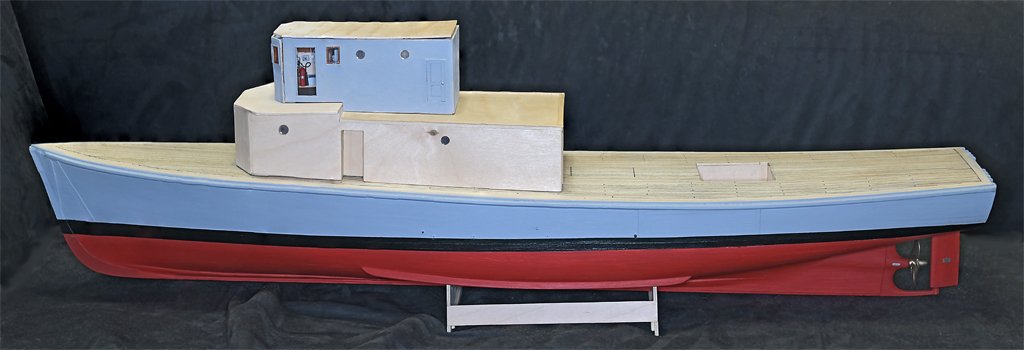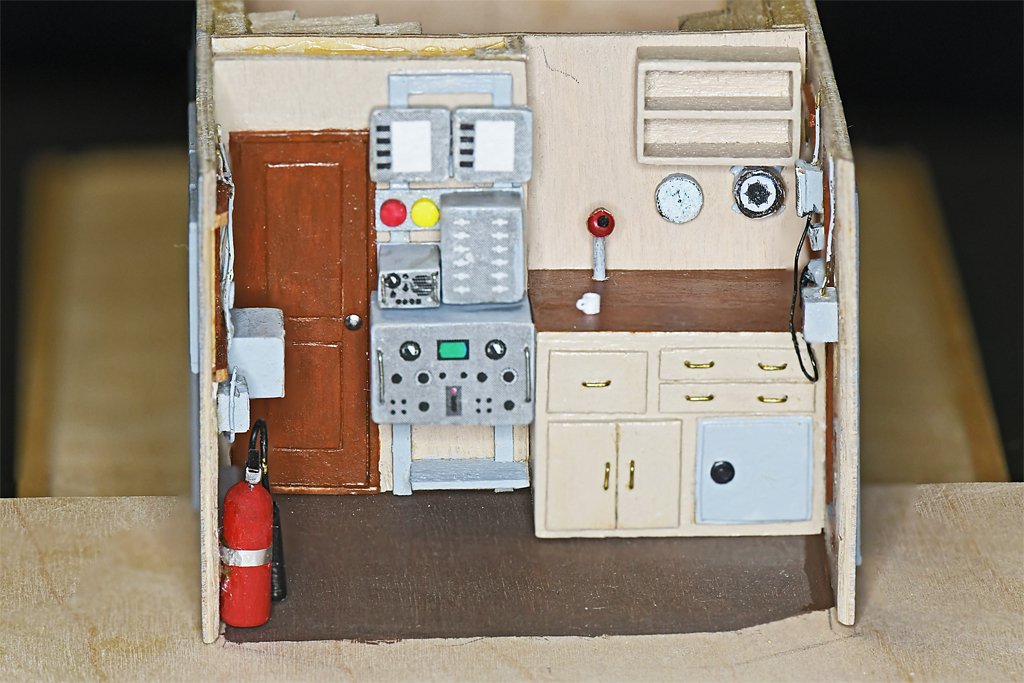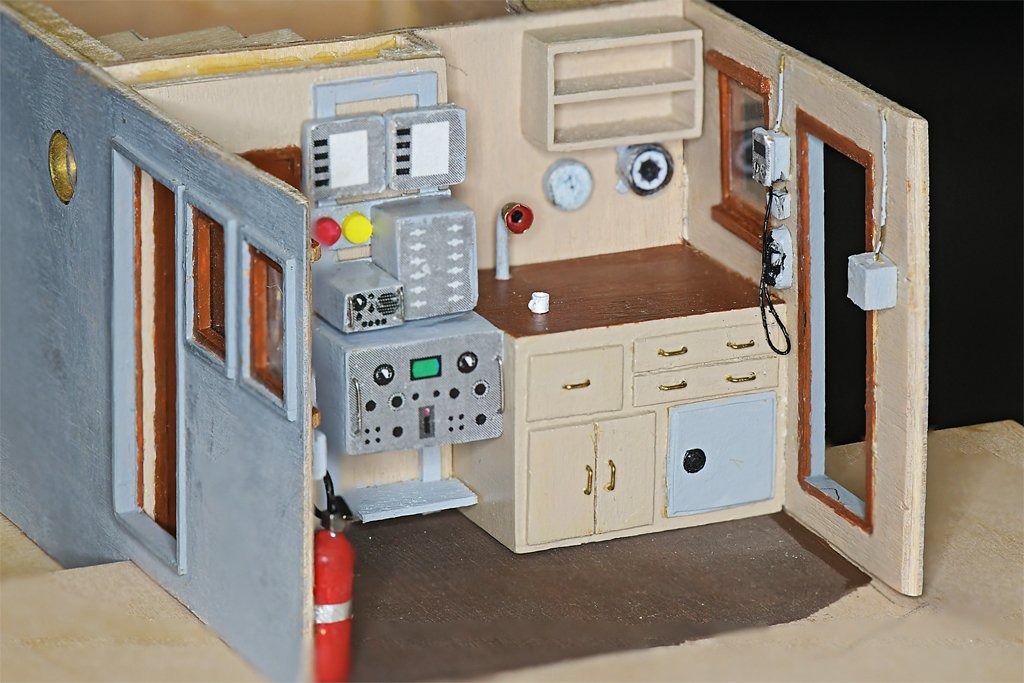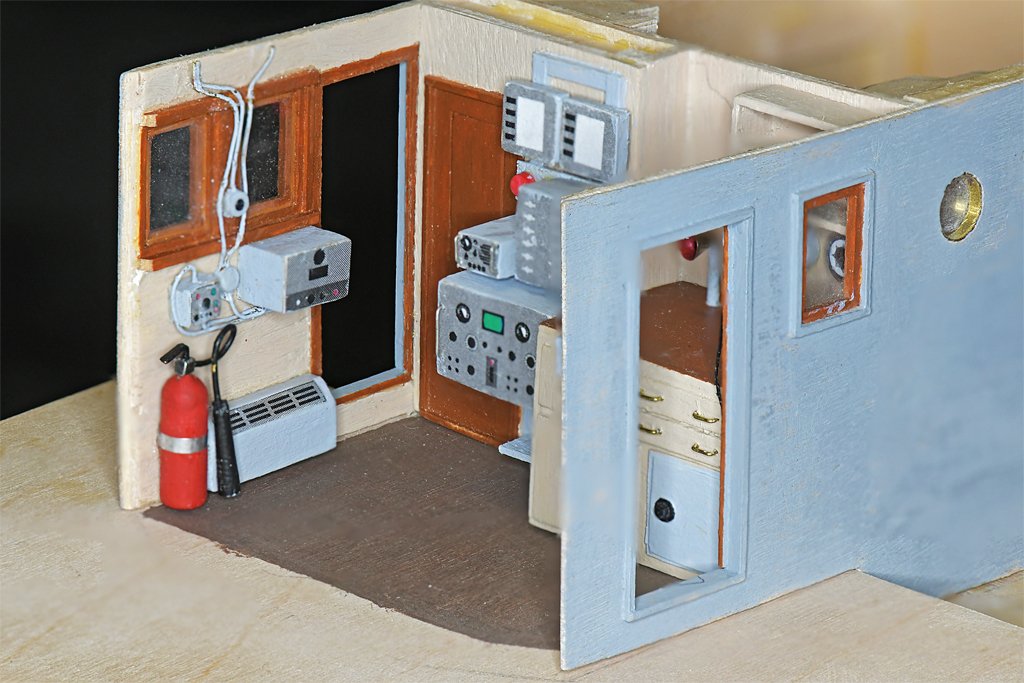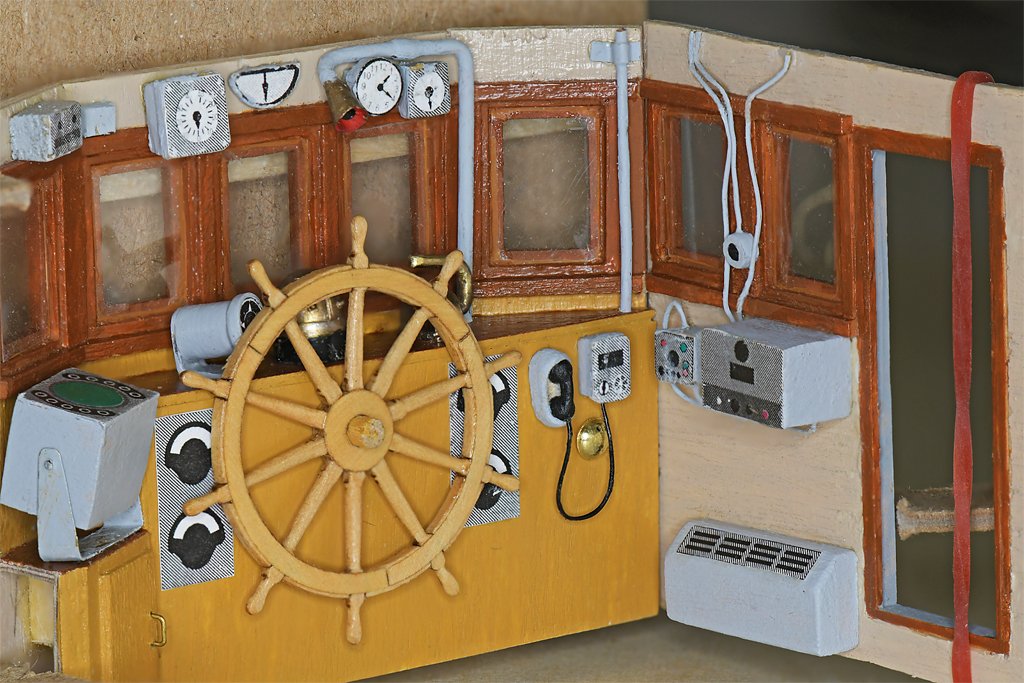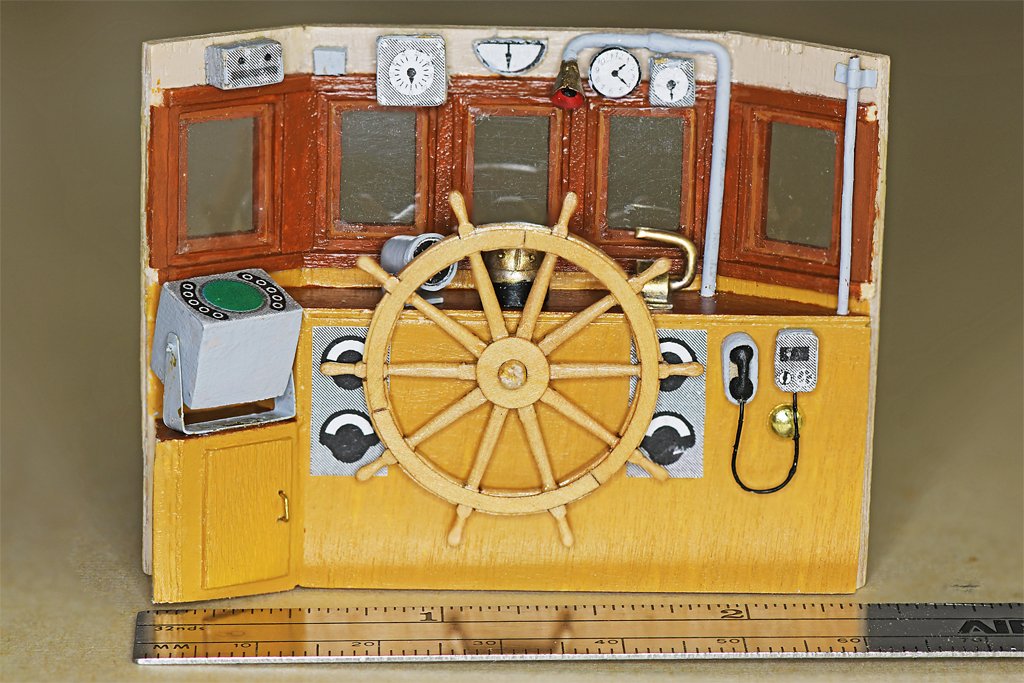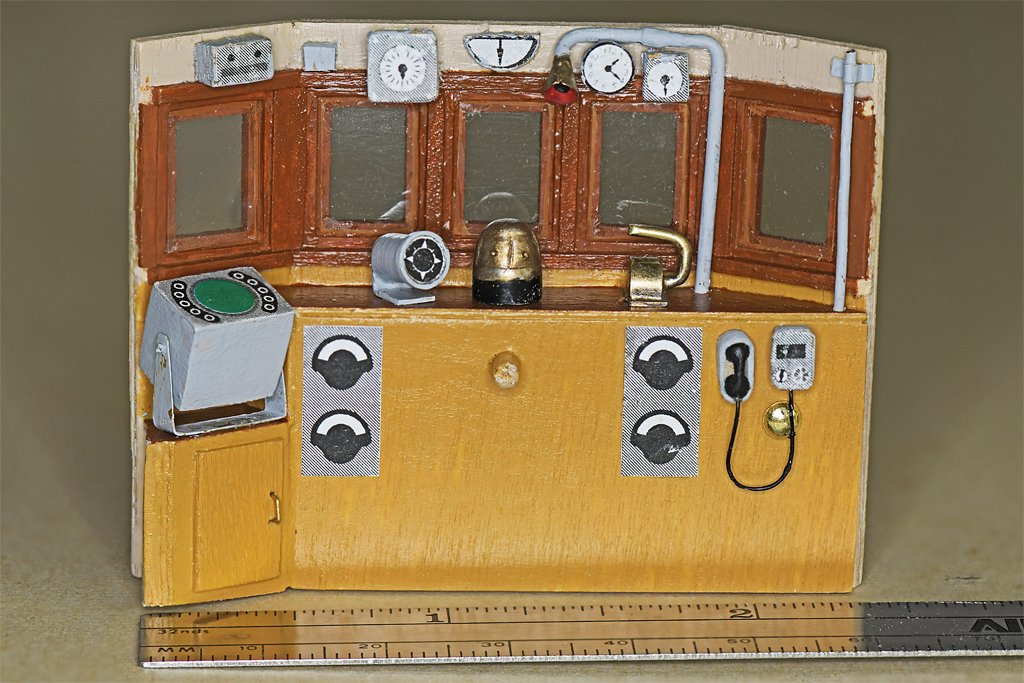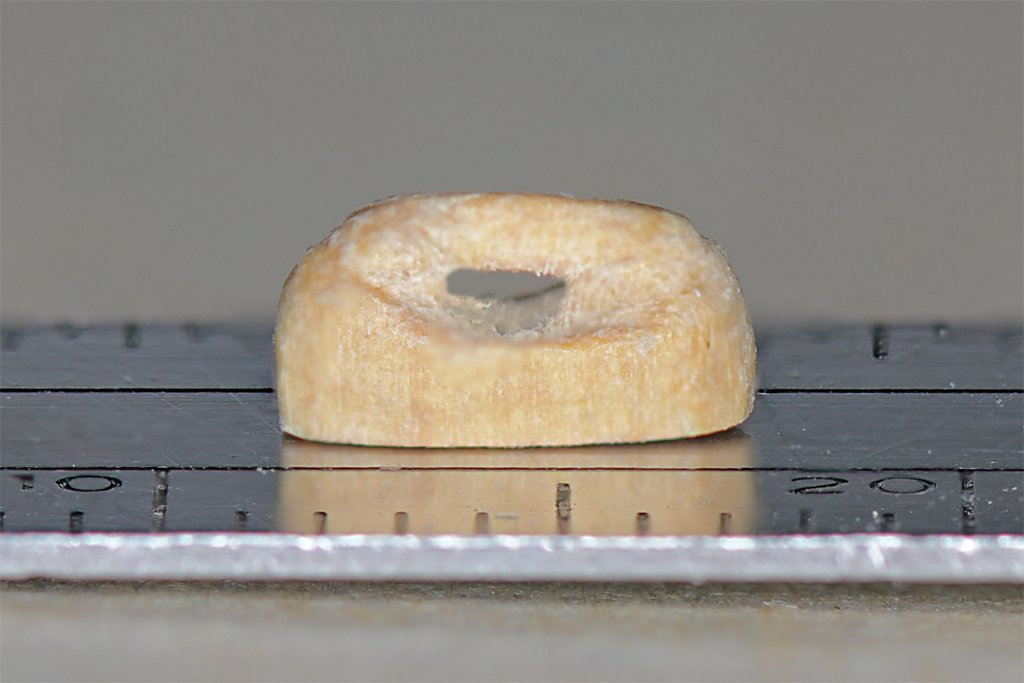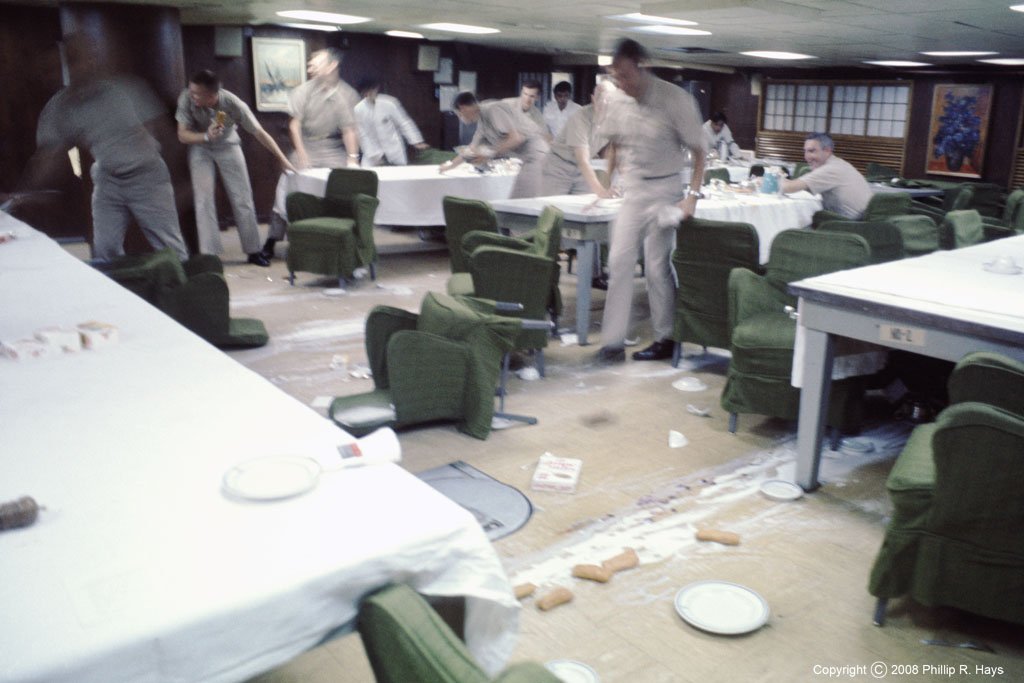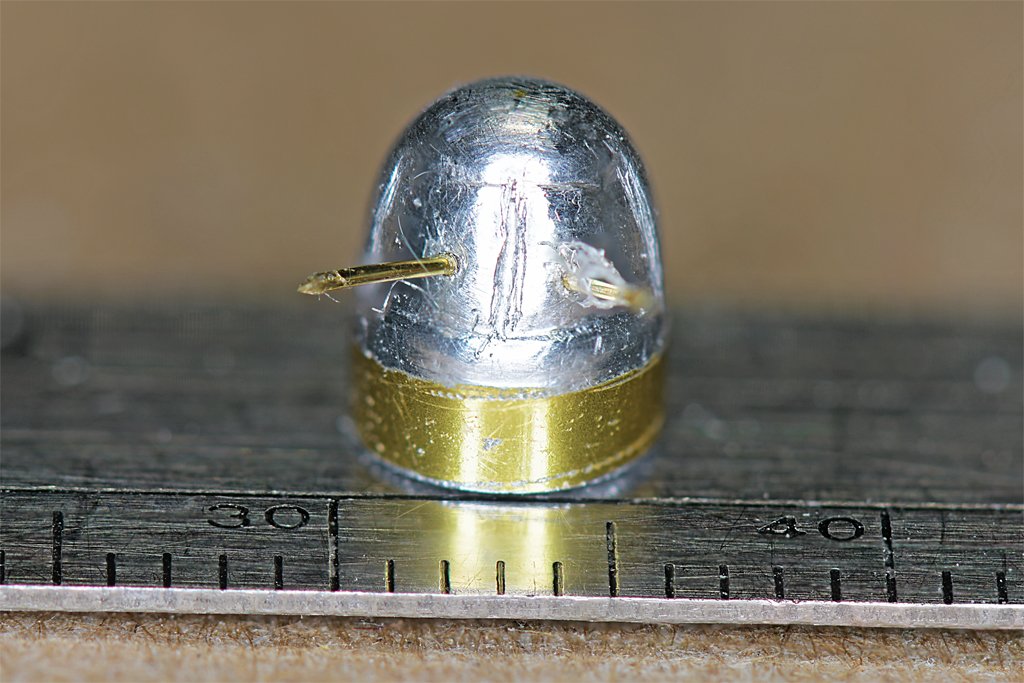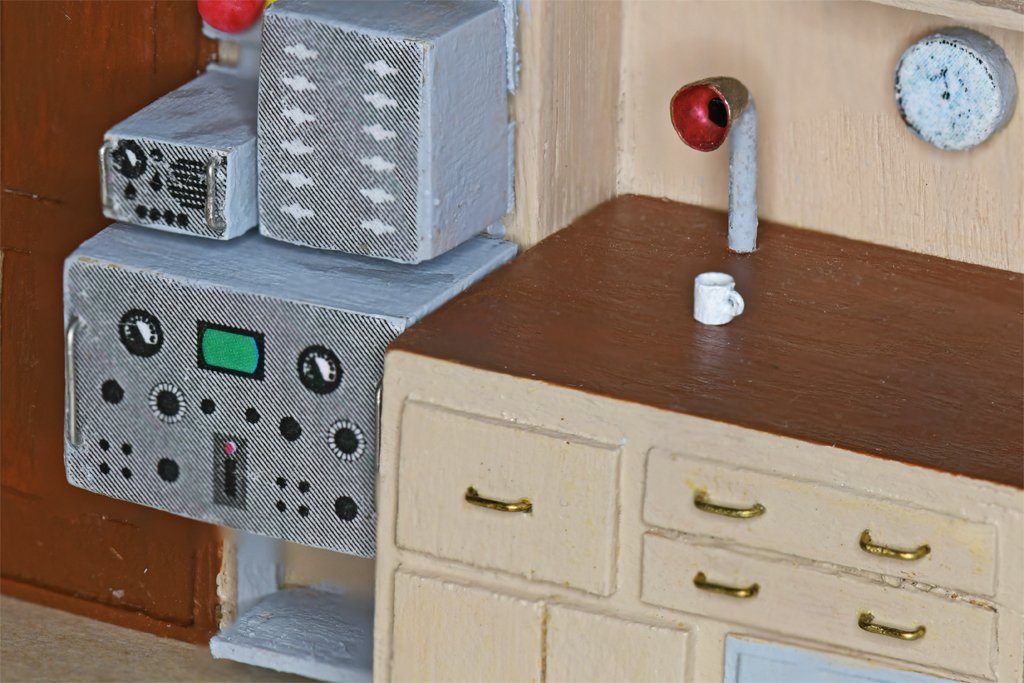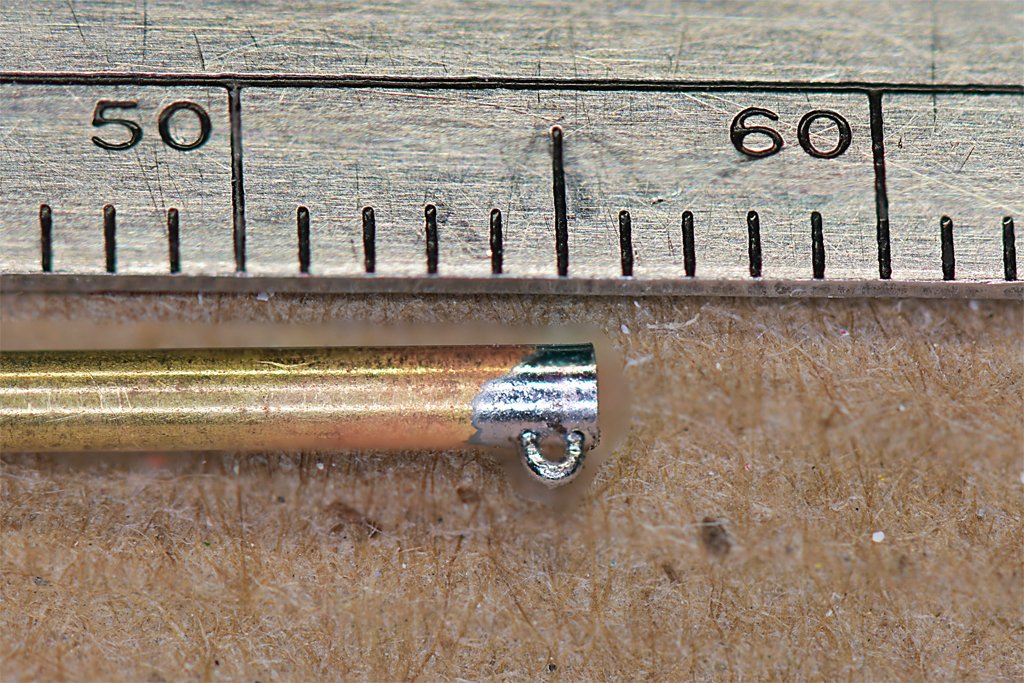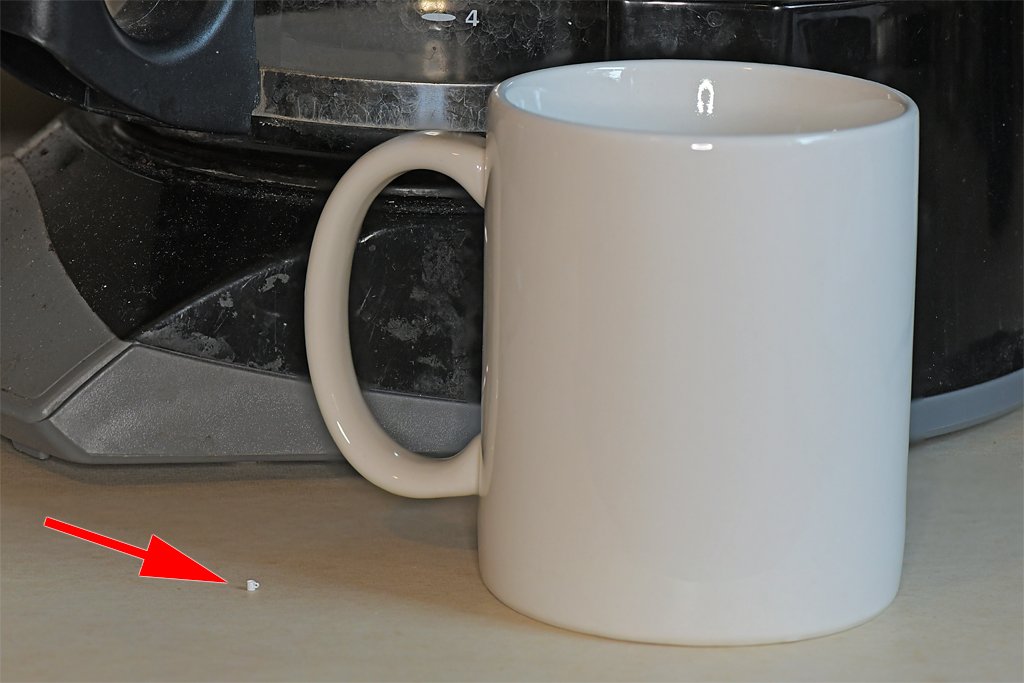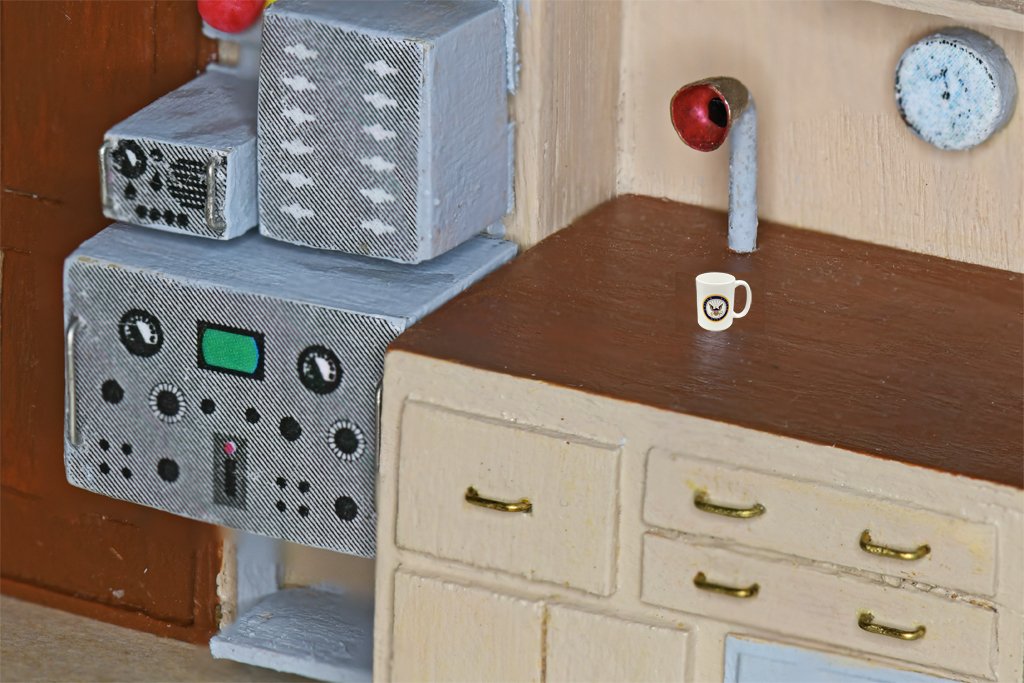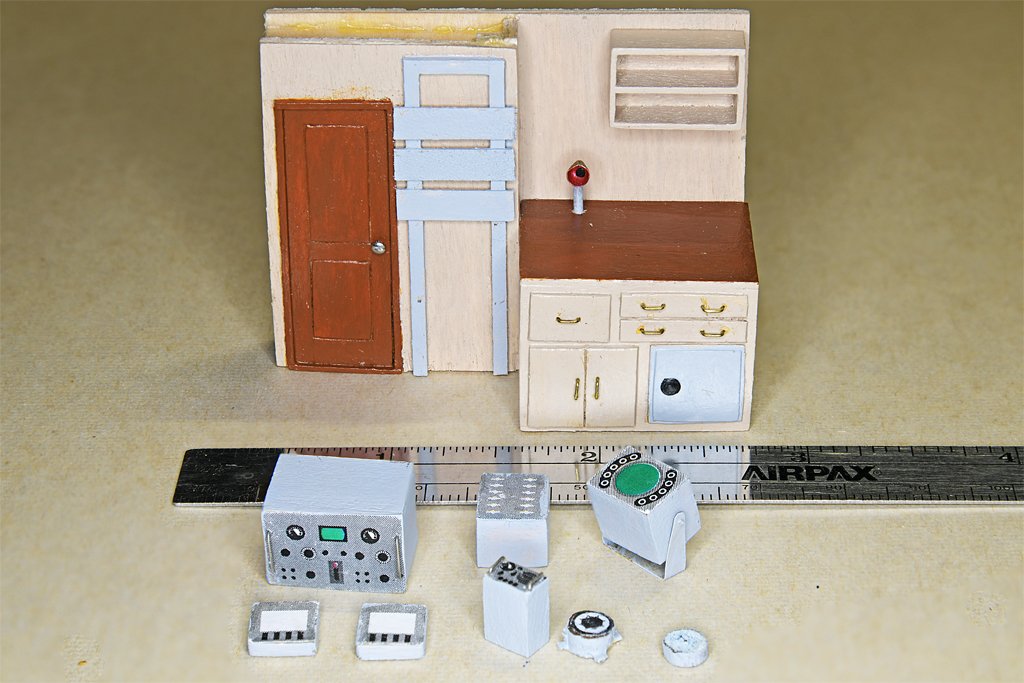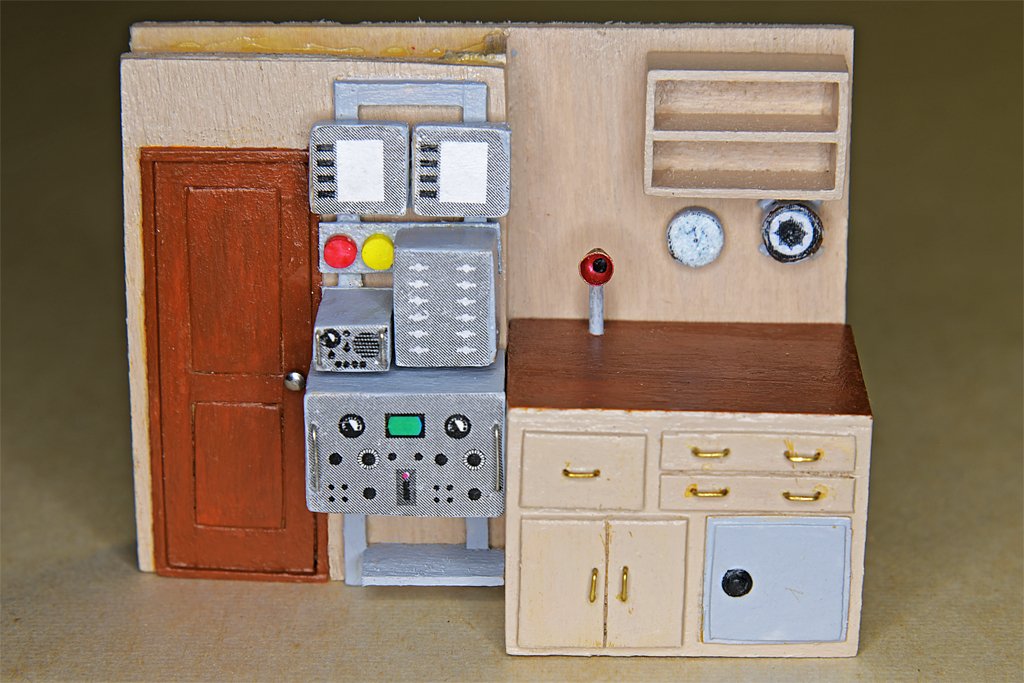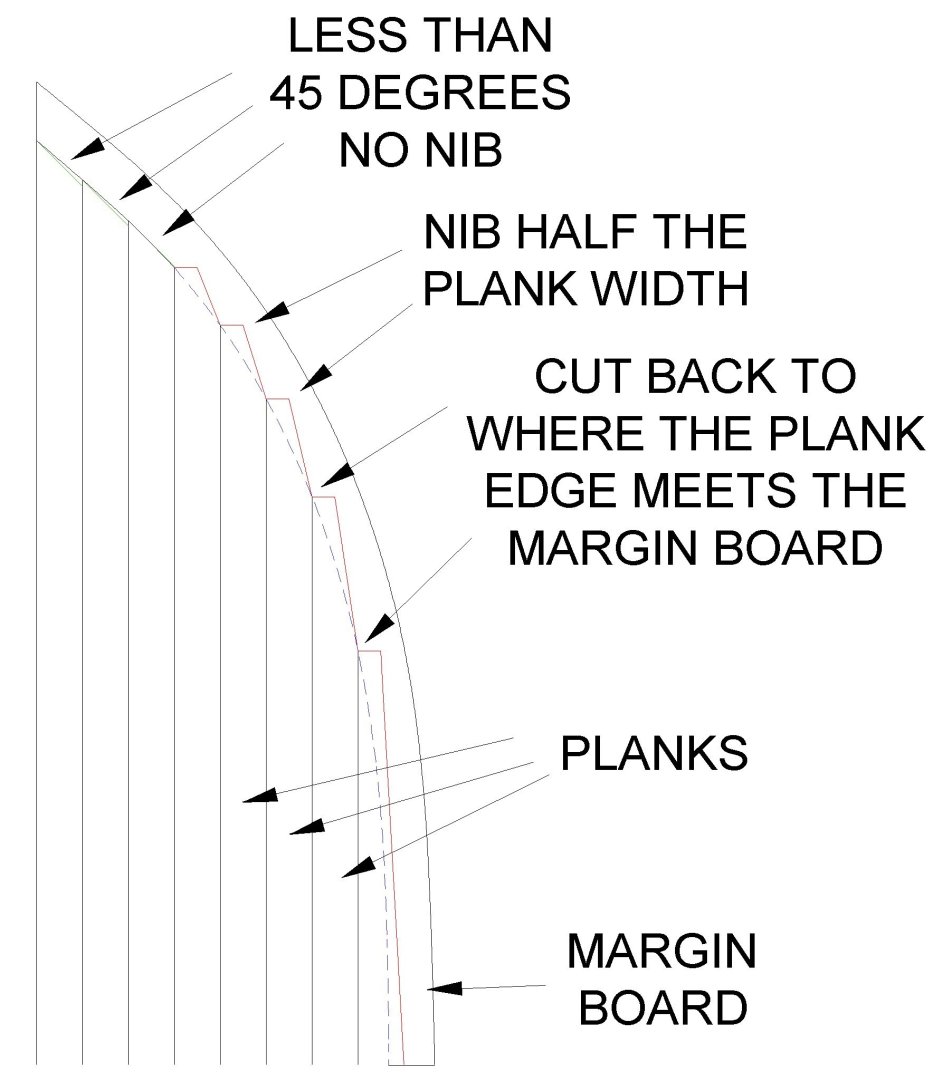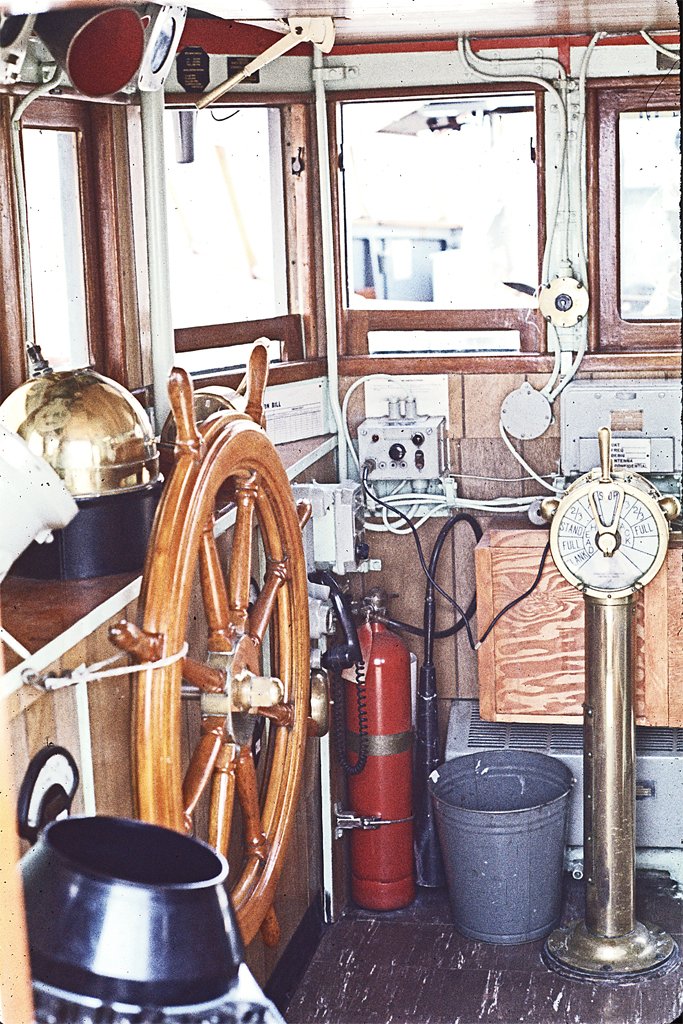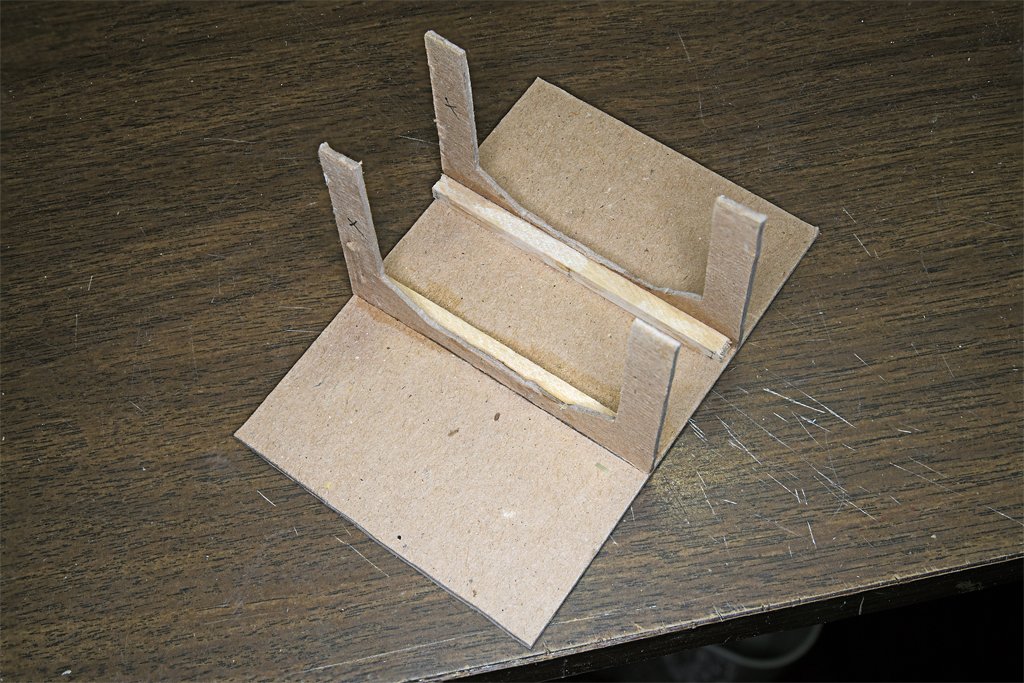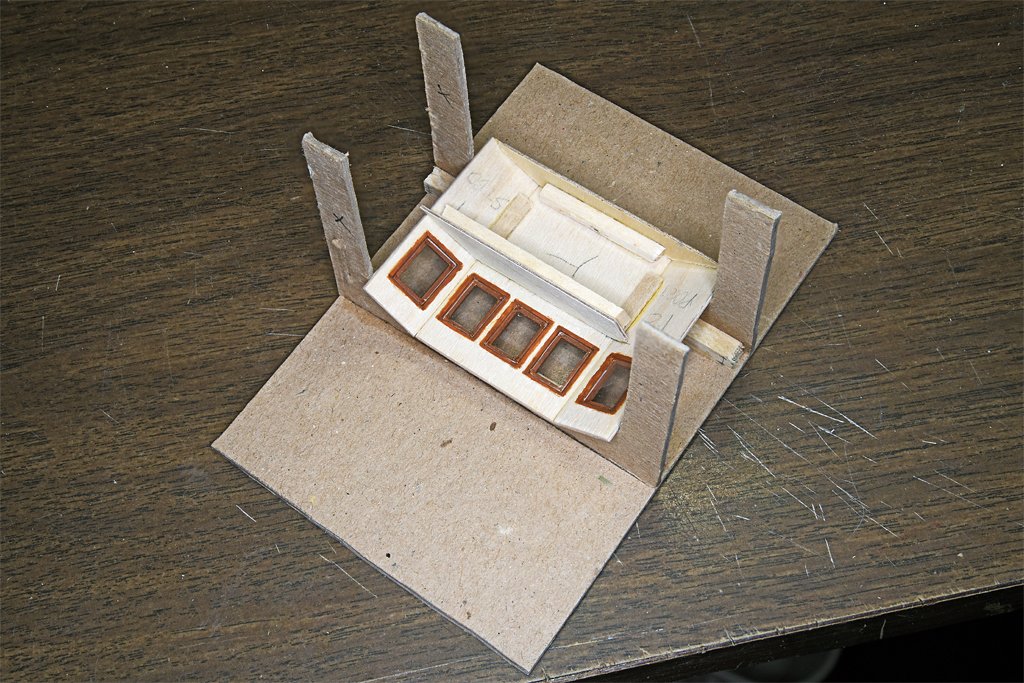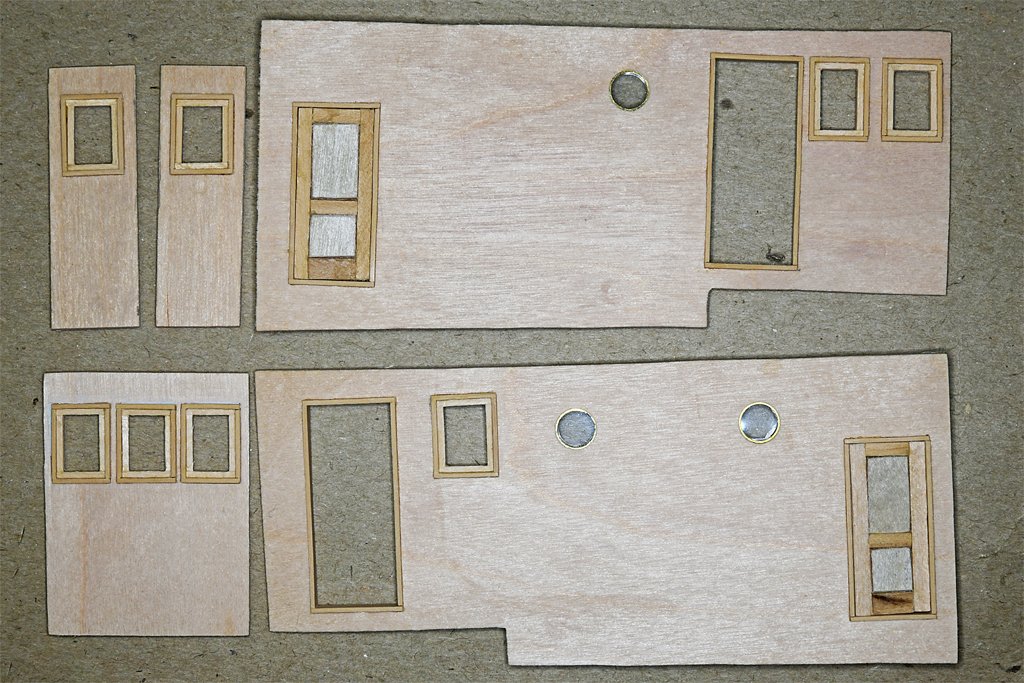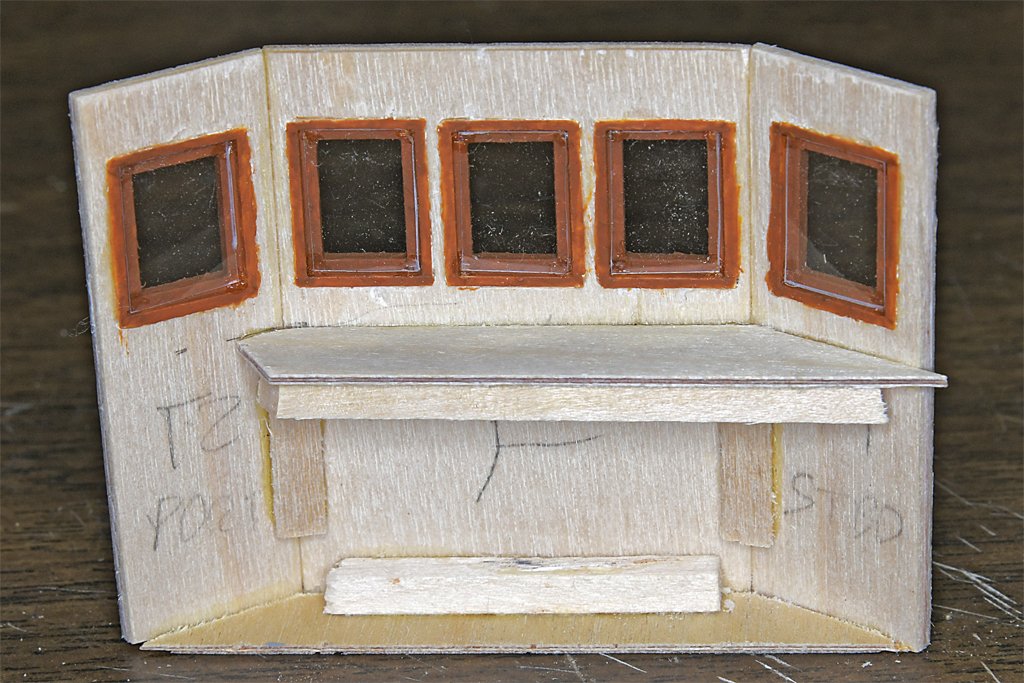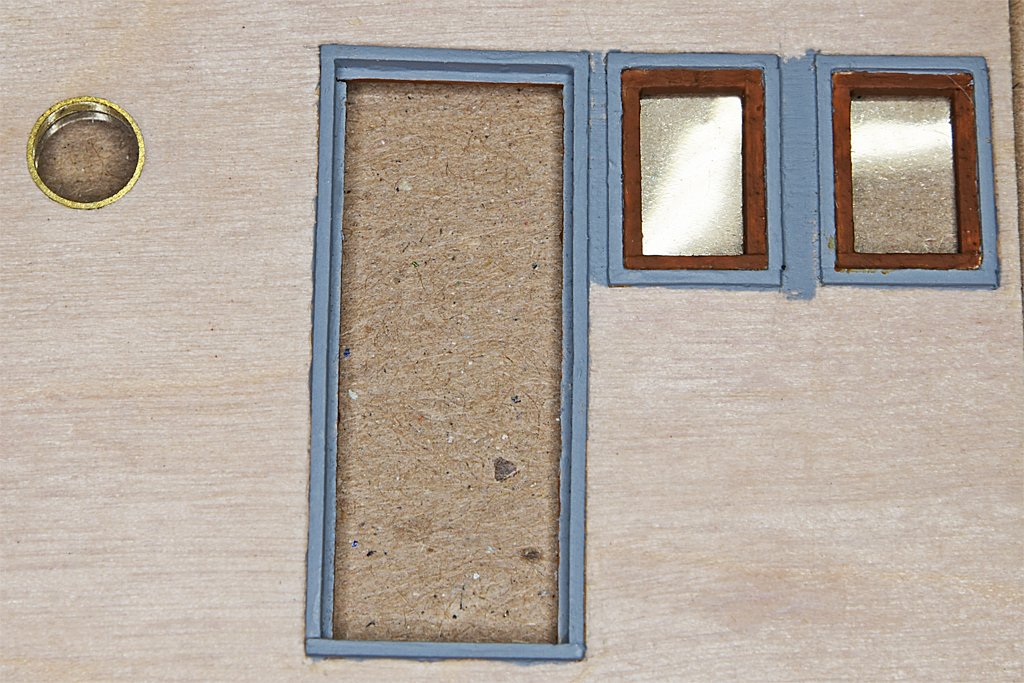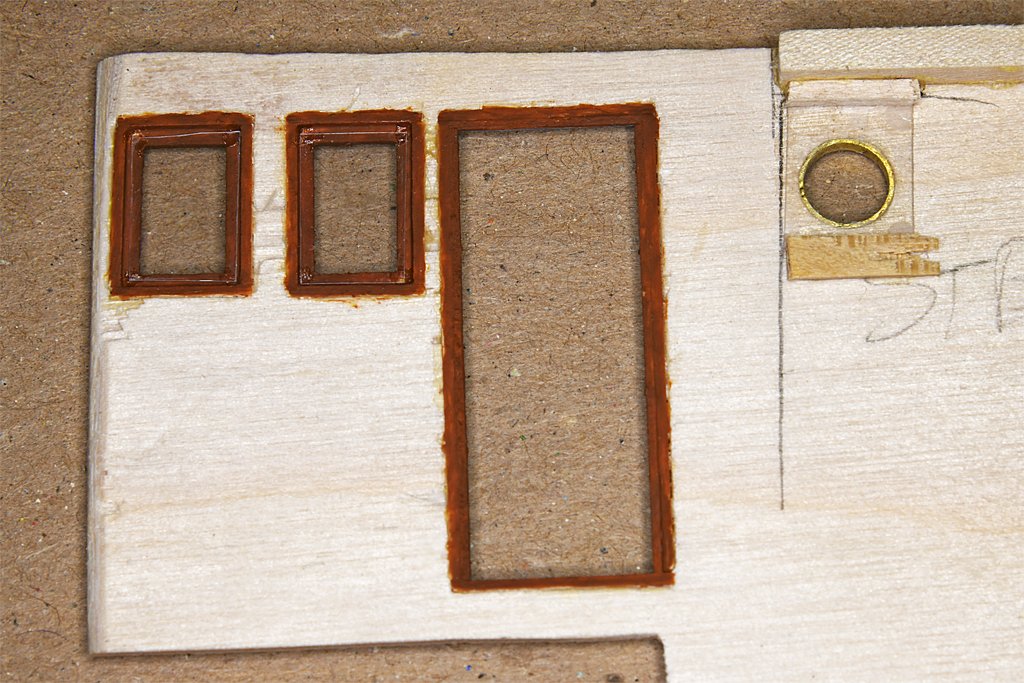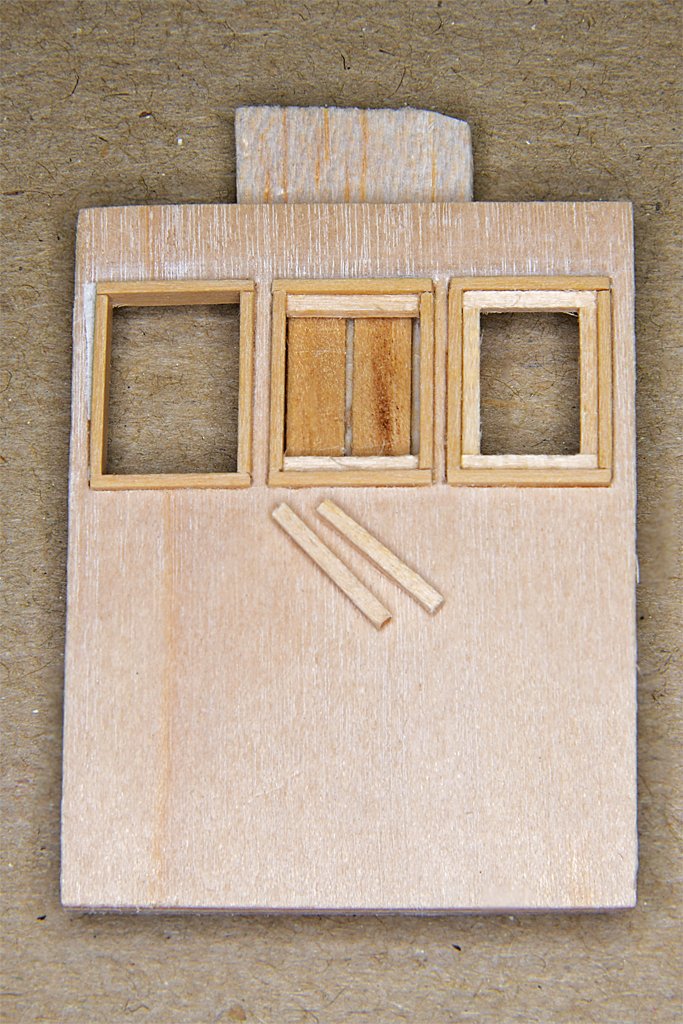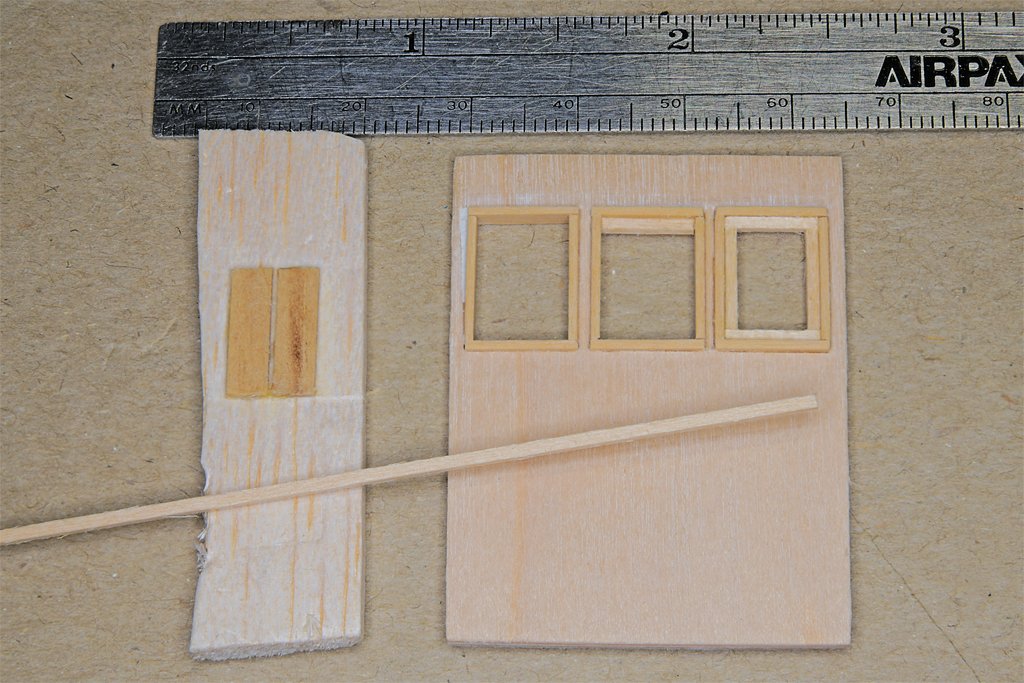-
Posts
2,410 -
Joined
-
Last visited
Content Type
Profiles
Forums
Gallery
Events
Everything posted by Dr PR
-
Tom, I would like to take credit for remembering all of that - especially the equipment model numbers - but I am working from blueprints with complete lists of everything from type and numbers of screws to the make and model of the radar. To be honest, I don't remember much of it. You made me curious, so I looked at my DD214 and all it says was "discharged," "honorable," and "strength adjustment." The war was winding down and the Navy had too many junior officers. Basically it said "Thanks for your service, good bye, and don't let the doorknob hit you in the rear."
- 438 replies
-
- minesweeper
- Cape
-
(and 1 more)
Tagged with:
-
Well, it was better than swimming out with a hammer and beating on them!
- 438 replies
-
- minesweeper
- Cape
-
(and 1 more)
Tagged with:
-
Thanks to everyone for your comments and likes. Here is a bit more progress: I have started assembling the O1 level superstructure. The sides of the pilot house are attached to the after pilot house bulkhead and the after bulkhead on the deck house. Here are a few views of the pilot house details before the forward bulkhead is attached. The deck was covered with brown linoleum tiles. I won't try to replicate the tile lines or the random pattern - they are too small to see at this scale. Here are a couple of photos of the deck house on the hull. The front and top of the O1 level are not attached yet, and are just sitting there. The O1 house is not attached to the main deck level house. Likewise, the main deck level deckhouse is not glued to the hull. There are still a lot of details to add to the superstructure and it will be easier to work on the parts off the hull. The next step will be the bulwark around the open bridge. For that I will remove the O1 level house so it isn't in the way. You can see one of the characteristics of minesweepers - a high pilot house up forward. This helps to see mines in the water ahead. Lookouts were posted on the O2 level above the pilot house to watch for mines. They carried M1 Garand rifles, and I was stationed there with a Browning Automatic Rifle (BAR). We were to shoot at any mines we saw, primarily to mark the location for the 50 caliber machine gun crew at the bow, and so the helmsman could try to avoid the mine. If we got lucky we might even detonate the mine, or sink it. We never fired at a real mine while I was aboard.
- 438 replies
-
- minesweeper
- Cape
-
(and 1 more)
Tagged with:
-
The boot topping and the waterline are not the same thing. The bottom of the boot topping is usually about the light load waterline - no fuel, ammunition or crew. Like the ship came from the shipyard before commissioning. The top of the bott topping is about the full load waterline - maximum fuel, stores, ammunition and crew aboard. More than the normal load. The normal operating waterline is somewhere between the light and full load, somewhere about the middle of the bott topping. Look for the draft marks to show where the normal operating water line should be. Add to this the fact that these waterlines changed every time new equipment, guns and such were added, and it is a bit tricky figuring where to paint the boot topping on a model. Given this, remember that ships stationed overseas often did not have the resources of a shipyard and drydock when repainting, and the resulting boot topping can be just about anywhere the crew painted it.
- 37 replies
-
- Pillsbury
- Clemson-class
-
(and 1 more)
Tagged with:
-
John, The doors on the sides of the pilot house will be open, and the interior will be visible through them. The side windows will offer a bit of a view. But the front windows will be hidden under a canvas cover over the open bridge. I suppose if you use a dental mirror or fiber optic camera you could see most of the detail.
- 438 replies
-
- minesweeper
- Cape
-
(and 1 more)
Tagged with:
-
I needed one more detail to finish the forward bulkhead of the pilot house - a phone. The Navy used sound powered telephones (current was generated by the microphone in the handset) for internal communications because they required no external power. The sending and receiving unit could be an ordinary looking telephone handset or a separate microphone and earphones. There were three handsets in the pilot house and on the bridge. I carved this one out of a 6 mm (~1/4 inch) piece of boxwood. It is pretty crude, but good enough for this use. The handset is housed in a cradle It took about six hours to carve this one. I need two more! You can see the handset on the right in these photos, next to the phone system call unit (hand cranked to generate the ring signal.). At left center is the radar unit. two pairs of tachometers for the engines flank the wheel, with the phone system to the right and a bell below the telephone call unit. On the shelf in front of the wheel are the main gyro (left), magnetic compass (binnacle, center) and the engine control (throttle) on the right. Above, from left to right, are the gyro amplifier, the small windshield wiper control, the rudder angle indicator, clinometer, voice tube, clock and propeller shaft rotation indicator. In these photos I have placed the front bulkhead and side bulkheads in the alignment jig to show how the pieces fit together. Not much is on the port bulkhead - just a sound powered phone call unit (less the handset). On the starboard bulkhead are an amplifier and control unit for the radios, and a heater. The CO2 cylinder will fit at the angle in front of the heater. The Engine Order Telegraph will be positioned on the deck beside the heater. I suppose I could add some more wiring here and there, but it wouldn't be visible, so I guess the pilot house interior is complete - except for one more telephone handset on the port bulkhead beside the chart table. I guess I will use the Syren 1 - 1/4 inch wheel, even though it is 25% oversized (should be 1 inch or 4 feet at full scale) and ten spokes instead of eight. No one but me will know the difference. I will now take a break to do the taxes as Treasurer for a non-profit. That could take a few days to two weeks.
- 438 replies
-
- minesweeper
- Cape
-
(and 1 more)
Tagged with:
-
Steve, Thanks! I am printing the "faces" of the instruments on my laser (actually LED) printer, on ordinary printer paper. Then I cut them out and glue them to the instrument body. This works OK for the wooden parts. But the dial face on the EOT came out a bit the worse for wear. I soldered all the parts together, including a pin for the EOT handle to attach to. Then the paper "dial" face was glued on. So far, so good. But when I soldered the handle onto the pin (briefly) the dial face became heated and distorted. It looks like some of the ink flaked off, so you can't read the lettering any more. It was probably the solder flux that distorted the printing. But it will be inside the pilot house and almost invisible, so it will work OK.
- 438 replies
-
- minesweeper
- Cape
-
(and 1 more)
Tagged with:
-
Ken, It would be appropriate to have a Chief for the coffee mug (I don't know if I ever saw a Chief without one). However, the highest ranking enlisted man on the Cape was a 1st Class Bosun's Mate.
- 438 replies
-
- minesweeper
- Cape
-
(and 1 more)
Tagged with:
-
Terry, The wardroom tables on the USS Oklahoma City CLG-5 had smooth plastic tops covered with table cloths. The tables were supposed to be bolted down, but some had been repositioned without fastening. This wasn't a problem until we were chassed out of White Beach, Okinawa, by a typhoon that made a sudden appearance (before weather satellites). While turning to put the wind on the starboard bow (northern hemisphere) we took some 30+ degree rolls. This was while the wardroom was seating for Sunday morning brunch. I had been topside taking photos of the storm and had just stepped up to the wardroom door when the ship took its heaviest roll. There were crashes from one end of the ship to the other as equipment broke loose from bulkheads and furniture slid around. This is what I saw when I opened the door - breakfasts and broken dishes on the floor and people and furniture sliding around on spilled sugar and cereal. The South China Sea and Gulf of Tonkin were hit by a series of storms that lasted a month and a half. We rode through five typhoons and a tropical storm in three weeks (and dodged two others)! After Okinawa we gave up and went to Yokosuka, Japan, for repairs.
- 438 replies
-
- minesweeper
- Cape
-
(and 1 more)
Tagged with:
-
More fiddly bits. The binnacle was turned out of a piece of 1/4 inch (5 mm) aluminum rod - part of a small wind chime (I didn't have a brass rod the proper diameter). The dome was shaped using a hand drill and files. The binnacle on the ship had two sliding doors that closed in front of the compass rose. To simulate this I carved the aluminum with a #11 blade and a tiny chisel made from a dentist's tool. It was a slow process! The two thin brass rods sticking out were for the two knobs. On the right the binnacle is in position in front of then helm. It was painted with the brushed bronze paint I used on the propeller. A few other small details can be seen. The voice tube from the bridge hangs over the helm station. The tachometers for the engines are on either side of the helm, and a sound powered phone call station is at the lower right. A phone hand set and a few more pieces will be added beside the binnacle and above the windows. Here is the lee helm or Engine Order Telegraph (EOT). It is made from 11 different pieces. It is 1.14 inches (29 mm) high from the base to the top of the handle (a bronze belaying pin). That is 4 feet 6 inches (1.4 meters) at 1:1 scale. I buffed it up good and then applied a layer of clear acrylic varnish to keep the shine. However, it appears the varnish may have reacted with the brass, and it is a lot duller a day later! I don't know if the EOT was ever used. The ship had a throttle beside the binnacle that the helmsman could use to control the engines. However, I do recall using standard engine orders - Ahead/Back 1/3, 2/3 and Full - when pulling away from the pier, so maybe it was normally used. The throttle might have been used to change propeller speed a few RPM in station keeping while sweeping mines. The 6 inch (150 mm) 15# CO2 bottle was turned from a 0.185 inch (4.7 mm) brass rod. The cone is styrene rod. I still have 14 more pieces to go on the forward bulkhead and side bulkheads of the pilot house.
- 438 replies
-
- minesweeper
- Cape
-
(and 1 more)
Tagged with:
-
The weather (windward or upwind side) backstays are tightened to take the strain on the mast. The lee (downwind side) backstays are slackened, and the tackle is moved, to allow the boom to swing outboard. As Trevor said, when the boat gybes (changes course so the wind comes from another side) and tacks while running into the wind (changing course so the wind is coming from ahead on another side on the bow) the running backstays have to be adjusted to support the masts from the windward side. It keeps the crew busy when course changes are frequent.
-
The dinnerware (cups, plates, bowls and mugs) were all ceramic.
- 438 replies
-
- minesweeper
- Cape
-
(and 1 more)
Tagged with:
-
I don't recall mugs without handles, so that must have been before my time. If I was working in 1:24 the model would be 4' 6" long (1.4 meters). As it is, at 1:48 it is 28 inches (711 mm) long and pretty large. And I must confess, I didn't paint the Navy seal on the mug - that picture was a Photoshopped fake. Here is the real 1:48 coffee cup on the chart desk.
- 438 replies
-
- minesweeper
- Cape
-
(and 1 more)
Tagged with:
-
One coffee cup coming up! First I drilled out a piece of 1/16 (1.59 mm) brass tubing to about 0.050 inch (1.3 mm). Then I drilled two 0.016 inch (0.4 mm) holes for the handle. The handle is 0.012 inch (0.3 mm) brass wire. The wire was soldered into place and the interior filed to remove the wire stubs. Then the cup was cut off from the tube, polished and painted. The paint needs to dry more before a second coat is applied. Here is the 1:48 scale 3 inch (75 mm) cup next to the real 1:1 thing. I calculate it will take about 120,000 "cups" from the scale cup to fill the real thing. And here is the navigator's cup on the chart desk. In the real Navy you would never place a coffee cup on the chart desk. But the Cape was McHale's Navy, and we went by Cape rules. The really difficult part was painting the Navy seal on the cup. That took a steady hand!
- 438 replies
-
- minesweeper
- Cape
-
(and 1 more)
Tagged with:
-
Coffee cups - a good idea! But at 1:48 a 3" (75 mm) diameter cup would be 1/16 inch (1.6 mm) diameter. That should be doable. Start with a 1/16 inch (0.0625) brass tube and drill it out with a 0.052 inch drill. That will leave 0.005 inch (0.127 mm) sides for the cup. The handles could be 0.012 inch brass wire. However, I have been working on the binnacle and it had a two-part sliding cover over the front with knobs to pull them open. I broke two 0.013 inch drill bits (using a hand held pin vise) making holes for the 0.012 inch dimeter wire "knobs." I wonder how many more bits I have left? Maybe I'll just solder the handles to the cup!
- 438 replies
-
- minesweeper
- Cape
-
(and 1 more)
Tagged with:
-
John, Thanks. I don't remember what we had on the shelves, but at 1:48 they are way too small to read anyway. Steve, It is always helpful to observe people who know what they are doing. Who are you watching?
- 438 replies
-
- minesweeper
- Cape
-
(and 1 more)
Tagged with:
-
Here is a bit more progress. This is the pilot house aft bulkhead and some of the instruments that will be mounted there. The large box is the Mk VII Magnetic Sweep Controller. Below it are two Navigation Light Panels. The small box is a KY-83S Keyer. Above it is a Transfer Panel for the Mk VII. At lower right are a gyro repeater and a barometer. Most of these parts mount on the gray rack to the right of the radio room door. I found a photo of the Keyer and used it to create the graphic on the face of the box. The Mk VII controller graphic is fictional - I can't find a photo of it. The Transfer Panel graphic is also guesswork. The gyro repeater and barometer graphics are actual photos. The light panel layout is shown in the blueprints, but the graphic is guesswork. The box that is mounted on a bracket is the ship's EDO Model 320A radar unit. It will be mounted on the pilot house forward bulkhead. Here is the equipment mounted in place. The red object is the General Alarm switch, and the yellow one is the Chemical Alarm. The actual units were octagonal with a handle, but th 1:48 scale they are too small to model correctly. The shelf below the Mk VII was for an electric megaphone. I guess I should put some books in the bookshelf over the chart table.
- 438 replies
-
- minesweeper
- Cape
-
(and 1 more)
Tagged with:
-
I have been working on some of the fiddly bits in the pilot house. These are the "megaphone" mouthpieces for the voice tubes. Four will be visible: one on the O2 level above the pilot house, one on the open bridge, one in the pilot house above the helm, and the fourth is on the chart desk in the pilot house. I took the dimension from the blueprint drawings, and printed the (very tiny) paper template from my CAD system. I made the pieces from 0.005 inch (0.13 mm) brass. Here is a photo of the completed parts (left) on top of the chart desk on the aft bulkhead of the pilot house. One of these tubes came up under and stands above the chart desk surface where the navigator can talk to the bridge or O2 level station. The safe and drawers are shown in detail on one of the blueprint sheets, but I had to estimate the actual dimensions. On the right is the chart desk positioned against the aft bulkhead. Just to the right of the door to the radio room is a frame for an equipment rack. Several pieces of equipment will be mounted there. All of this is like making dollhouse furniture. This is the forward bulkhead for the pilot house. The shelf in front of the helm will support a magnetic compass, a gyro repeater, and propulsion control unit (throttle). There will be several instruments above the windows, and four tachometers for the engines will be mounted on the lower front on either side of the helm. The low shelf at the left will support the navigation radar control unit. This helm is the Syren 1-1/4 inch (32 mm) kit that is 5 feet (1.5 meters) diameter at 1:48 scale. This is oversized - I learned from the blueprints that the original wheel was 4 feet diameter, or 1 inch (25 mm) at 1:48. The kit has 10 spokes and the original had only eight. If I can find an eight spoke 1" diameter wheel I will use it instead. Maybe I will scratch build one. The "mahogany" window trim came out pretty good, especially after a coat of acrylic satin varnish. The vertical parts were paneled in a light colored wood, hence the "straw" color (you might recognize from my schooner build). This definitely was not a stock Navy paint color. The panel above the windows, and the aft pilot house bulkhead and chart desk front are painted an off white buff color. Again, this isn't what the blueprint painting schedule called for. It says to paint the walls and overhead green. The Navy did use a pale "puke" green in interiors, but the photos I have show an off white color with no hint of green (maybe the colors faded in the slides before I scanned them). And overheads were always painted white.
- 438 replies
-
- minesweeper
- Cape
-
(and 1 more)
Tagged with:
-
Your eyes adapt to the darkness in less than 15 minutes, and it is surprising how much you can see in the "dark." We could see unlighted fishing boats in almost any clear weather and calm seas. Heavy seas and rain made it more difficult. But even a small light could be seen from a great distance. Fishing boats often had a small light pointing down into the water to attract fish, and these were very easy to see at a great distance. You can also see the glow of bow waves and wakes from light emitted by microscopic marine creatures. I didn't have any trouble walking around on deck at night, and some of our decks were painted dark gray.
-
With your nibbing it looks like you are trying to cut each plank at the same angle. This is wrong, and you are about to discover the problem in a big way. The farther aft you go the deeper you are cutting into the waterway/nibbing strake/margin board. Eventually somewhere close to midships you will have to cut all the way through it. The purpose of nibbing is to avoid sharp pointed ends on the planks. These will tend to catch on ropes and other things dragged along the deck, and the plank tips will break off. And it is just easier to cut the nib than it is to try and match angles between the planks and margin boards exactly. As a rule of thumb, never cut more than half way through the margin board. In some cases an even shallower cut is called for. If the angle back along the margin board is less than 45 degrees (green lines - look closely) there is no nib and the plank is cut straight along the edge of the margin board. This is optional - it doesn't hurt to nib these planks too. If the angle is greater than 45 degrees the plank is always nibbed into the margin board. The width of the squared off part at the end of the plank (red line) is about 1/2 the plank width (I have seen examples where it was 1/3 the plank width). The angle of the nib at each plank is different. From the center of the plank the angle back is determined by where the edge of the full width plank meets the edge of the uncut margin board (dashed blue line). The nib cut (red line) runs from this point to the center of the plank at the squared-off end. Near midships the edge of the margin board is almost parallel to the edge of the plank. Here you will need to be creative. Nib the plank as usual at the end. Then cut back to where the plank edge is half way into the margin board. Then cut straight back along the plank edge, never cutting more than half way through the margin board. At the other end of the deck do just the opposite for the outer plank, and nib the remaining planks normally.
- 257 replies
-
I have been working on the O1 level deck house and the pilot house details. First up is framing the windows. I had already installed the window frames as mentioned above. Now I needed to install the windows themselves. Unfortunately, none of the real mahogany I have is small/thin enough, and I don't have the tools to make a lot of consistently small pieces. The sashes (the parts holding the glass) were 2 inches (51 mm) wide, and that scales to 0.42 inches (1.1 mm) at 1:48 scale. I just happen to have two packages of 0.0416 x 0.416 inch (1 mm x 1 mm) basswood scale lumber from Midwest Products Co. I needed to install strips of this wood into the window openings, more or less centered into the depth of the opening so there would be room for the "glass" behind the sashes. For this I made a tool from a piece of scrap wood (on the left in the picture) as a base and glued on two pieces of wood 1/32 inch (0.8 mm) thick that were shaped to fit into the window openings from the inside. The window opening was placed over the tool. Pieces of the 0.042 x 0.042 inch basswood were cut to fit into the window opening and glued in place. This put the sashes recessed a bit into the openings in the window frames, with space behind to install the clear window material. But what should I use for the "glass?" I thought I would try to cut some glass microscope slide covers. In theory I could get four window panes from a single 22 x 22 mm 1 oz. cover glass. These varied in thickness between 0,0045 to 0.0065 inch (0.114 to 0.165 mm) and would be a perfect fit into the space behind the sashes. HAH! Fat chance!! After shattering a half dozen cover slips with nothing resembling a rectangular window pane I decided another solution was needed. Note to self - never again even think of trying to cut microscope cover slips! I do have some 0.005 inch (0.127 mm) thick clear styrene sheet from Evergreen Scale Models so I used that for the windows and air ports (seems I tried the cover slips for the air ports on the lower deck house sides and didn't learn the lesson then!). I eventually finished all the window sashes for pilot house in the forward end of the O1 deck house. The smaller doors into the fan room at the rear were also installed. They were made the same way as the doors in the lower deck house. The air ports also were the same as in the lower deck house. Next up was painting the window sashes and frames prior to installing the styrene window panes. I mixed up a batch of reddish-brown "mahogany" paint for the sashes and internal window and door frames. The external frames were painted the same gray that the house sides will be painted. I wanted to finish painting everything close to the clear window panes so I don't have to worry about getting paint on them when the deckhouses are painted. The interior of the pilot house will be detailed with additional trim around the windows and doors, so I wasn't too anal about getting a clean edge around them now. After the paint dried I glued the styrene window panes into the openings. The openings were all close to the same size (except one that was actually 1 inch narrower on the ship) but still varied by slight amounts. Each pane was individually cut to size and then glued into the opening with very small drops of Duco Cement in the corners of the openings. Then it was time to start assembling things. I had a lot of trouble with the forward end of the lower deck house and had to try three times to get everything aligned correctly. The O1 deckhouse was a bit easier. The house sides were parallel, and everything fit to the bridge deck at right angles. To help with the assembly I made a frame out of thick cardboard that would hold the pieces in place while the glue set. The two side panels for the front of the deckhouse fit to the center panel at 150 degree angles (30 degrees angled back from the front surface). The two vertical parts of the frame were carefully cut to the exact shape. After gluing the three deckhouse front panels together along the edges additional pieces were glued on for reinforcement. A thin (1/32 inch plywood) bottom piece was used to support the angle of the front pieces, but this also serves to support the bottom panel of the interior of the front of the pilot house. Below the windows is the counter top of the interior where several instruments will be positioned in front of the helm. This is just the beginning of detailing the pilot house. Most of the interior was paneled, with mahogany trim around the windows and doors. Nearly every surface was covered with instruments and wiring. The blueprints show the positions of everything in great detail. Making and wiring all of this stuff at 1:48 will be interesting. The blueprints give the Navy part numbers for all of the equipment, but not much detail is included for what each part looked like. I am searching the Internet for photos, instruction manuals and such. For example, at the lower left is the EDO Model 320A navigational radar receiver control. Apparently the Navy used these on several small vessels. But I can find only a few mentions of this device on the Internet and no photos. I have lists of US Navy electronic equipment from this period (1950s to 1960s) and none mention this equipment! Just tracking down the EDO company and it's products has been a challenge. Add to this esoteric items like the Mk VII magnetic sweep controller and "navigational light control panels" and what I end up with will loosely represent all of the equipment here. But it will look like a pilot house, and that is the goal.
- 438 replies
-
- minesweeper
- Cape
-
(and 1 more)
Tagged with:
-
George, Now there is a solution I hadn't thought of! My question really was more general than the example I used. How do you widen a groove to fit another piece - or as you suggest - how do you shrink the other piece to fit the groove? Some woods do become more pliable when wet than when dry. I have definitely noticed that wood is more "crushable" when soaked with water. So if you wet the wooden plank (bulkhead, whatever) you might be able to squeeze it into the groove. On the other hand, if you wet the sides of the groove you might be able to force a dry piece (wood, plastic, metal, etc.) into the groove. When everything dries the fit should be tight. One catch is the type of glues you have used on the materials surrounding the groove. Some glues are water soluble, so soaking the sides of the groove could cause things to fall apart. Another potential problem is that when the wood dries the plank or the surfaces around the groove might be "wrinkled" because of the displaced wood.
About us
Modelshipworld - Advancing Ship Modeling through Research
SSL Secured
Your security is important for us so this Website is SSL-Secured
NRG Mailing Address
Nautical Research Guild
237 South Lincoln Street
Westmont IL, 60559-1917
Model Ship World ® and the MSW logo are Registered Trademarks, and belong to the Nautical Research Guild (United States Patent and Trademark Office: No. 6,929,264 & No. 6,929,274, registered Dec. 20, 2022)
Helpful Links
About the NRG
If you enjoy building ship models that are historically accurate as well as beautiful, then The Nautical Research Guild (NRG) is just right for you.
The Guild is a non-profit educational organization whose mission is to “Advance Ship Modeling Through Research”. We provide support to our members in their efforts to raise the quality of their model ships.
The Nautical Research Guild has published our world-renowned quarterly magazine, The Nautical Research Journal, since 1955. The pages of the Journal are full of articles by accomplished ship modelers who show you how they create those exquisite details on their models, and by maritime historians who show you the correct details to build. The Journal is available in both print and digital editions. Go to the NRG web site (www.thenrg.org) to download a complimentary digital copy of the Journal. The NRG also publishes plan sets, books and compilations of back issues of the Journal and the former Ships in Scale and Model Ship Builder magazines.





